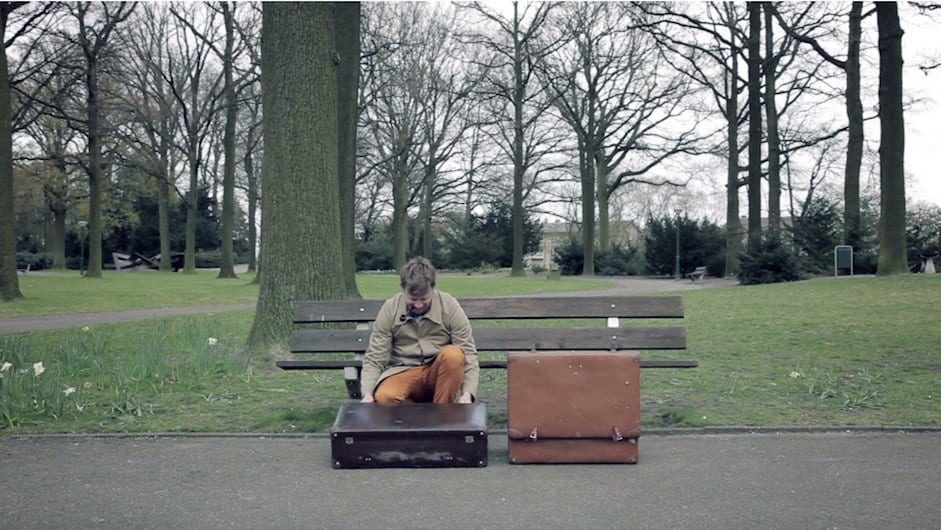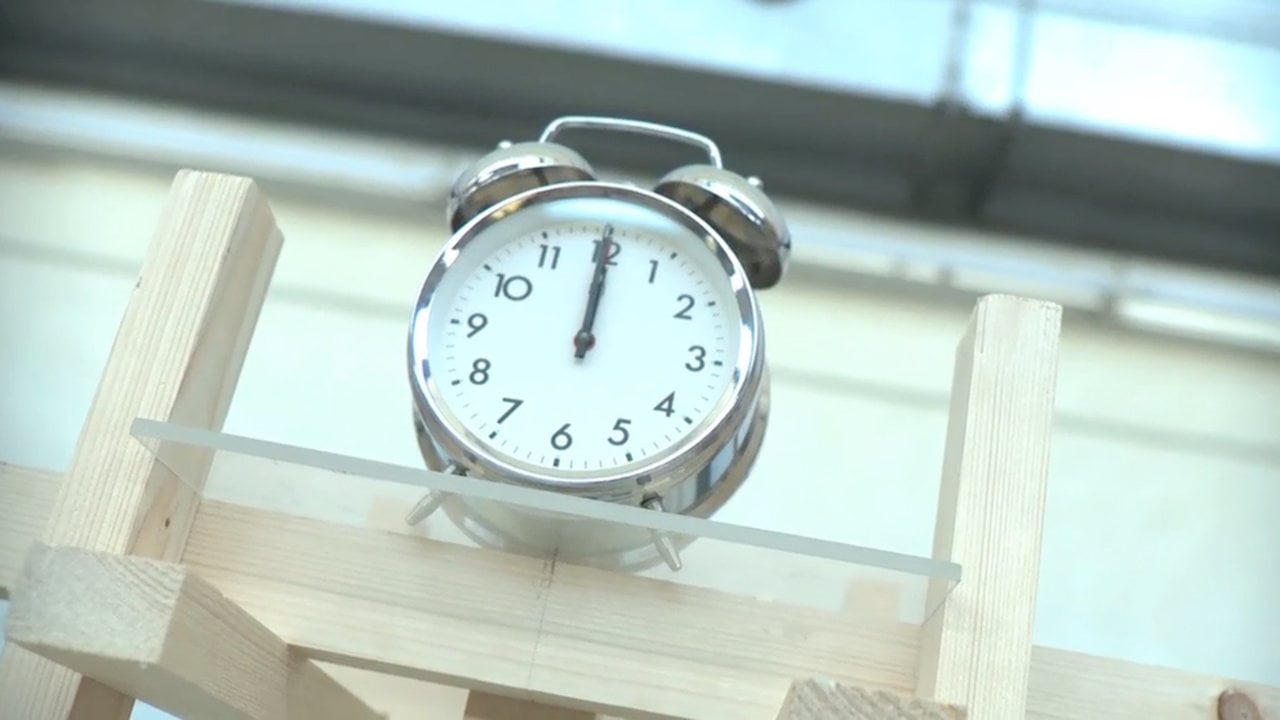Could you describe the process of making Melvin the mini-machine please?
Building and designing usually go hand in hand with projects like these and there’s a lot of trial and error involved.
At first, we started out designing parts and setting the boundaries in terms of functions and styling and after that we pretty much built the whole thing in about three weeks.
In short (very short) what happens is the following:
An alarm clock goes off, setting a bunch of parts in motion in the first suitcase. Then, a catapult flings a ball over to the second suitcase which opens all by itself. After going through another 10 steps (the first step being set off by the opening of the suitcase) the second suitcase then passes a ball back to the first suitcase setting off the fully automatic postcard-signer-dispenser. In the end a bell goes off (much like a microwave oven) letting you know your postcard is ready and it has completed the run.
Luckily, there’s a step-by-step explanation of each part of the machine on the website (in case you want to know more about it).
So this is your second machine? How did the idea to build a machine originally come about – and how did it evolve?
We built a pretty big chain reaction machine in the end of 2010 for artspace MU’s (Eindhoven) Dutch Design Week show. The idea behind Melvin was to capture a moment and make the experience worth more than the process itself. In about three weeks we built it on location with a team of eight designers, amateur-engineers and crazy people. During the show over 14.000 people came to see Melvin perform.
A couple of months later we decided to completely rebuild and redesign it for a video (see Related Content).
Beginning of this year we had some time to spare and we decided to build a new Melvin (once you start it’s hard to stop thinking along those lines), but make it as small as possible. Since the first Melvin was way to big to transport (even though we built it kind of modular) we set out to build something that would be extremely portable. It made perfect sense at the time.
How does Melvin interact with its audience?
An important aspect of both Melvins is the online identity: the first Melvin had a couple of webcams, buttons and computers built into it so it could take pictures of its audience and upload it to its website, Twitter account and Facebook page. We really liked the idea of an object talking about its fabulous life (it made and sold its own merchandise too).
Mini Melvin is meant to travel the world, so, much like a modern day tourist, it needs to be able to take pictures and post them online.
The bottom line is that we tried to create a machine that’s – in a very non-human way – as human as possible by copying human behavior. He uses social media and his weblog to describe his travels and takes pictures of the things he sees (and of course comments on that).
Any major challenges of the film production?
The biggest challenge within this project was to get the machine to work in one time (outside, in a windy park). There are 38 steps that might, or might not work the way they’re supposed to work. And yes, of course we’ve built it ourselves and we could have built something that just works all the time.. but that just wouldn’t be so much fun to look at. The fact that it isn’t flawless makes it so exiting. So we needed a LOT of time and patience to capture the sequence more or less in one shot. We needed 2 days to film the 45 sec of the machine. On the third day we shot the rest (4.55 min).
Apart from making fabulous machines what else does HEYHEYHEY do? Your website describes you as: HEYHEYHEY is a design studio with a special interest in whatever comes to our attention. We are not limited by any visual style or medium. So what else has come to your attention recently?
HEYHEYHEY is a design studio based in Eindhoven, in the south of the Netherlands with a soft spot for (what we call) hopeless projects. Melvin is one of them. Basically, this is what we do for a living – coming up with identities, campaigns and remarkable projects for clients (like the first Melvin). We also work on self-initiated projects if we have the time (like we did now) to hone our skills. In the case of Mini Melvin we wanted to see if we could build a machine as small as this, and get better at telling stories with film.














